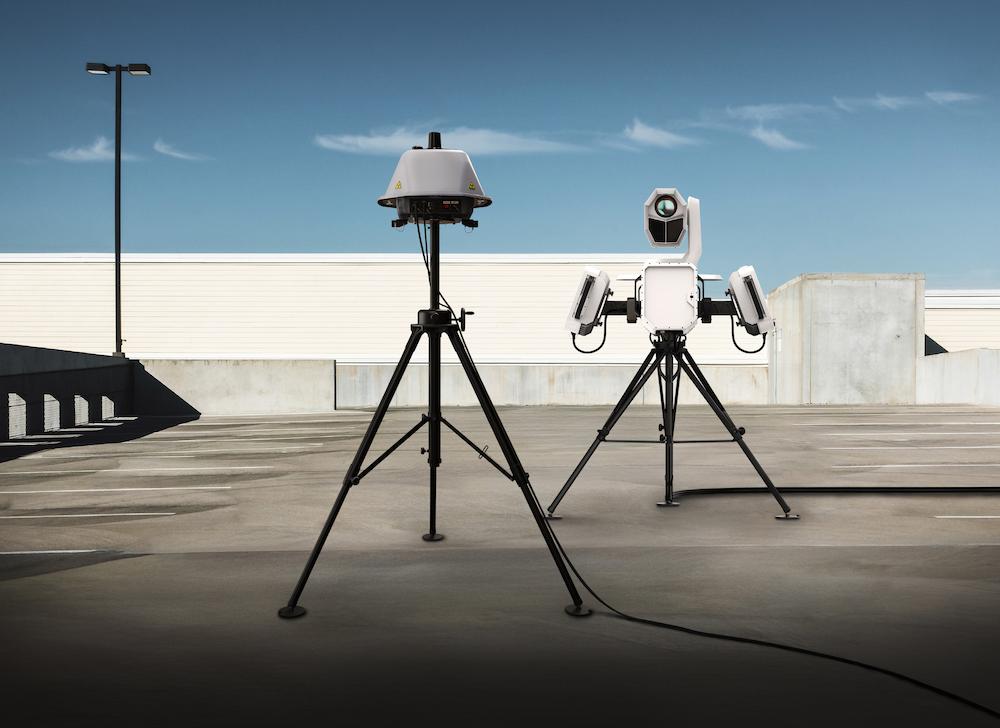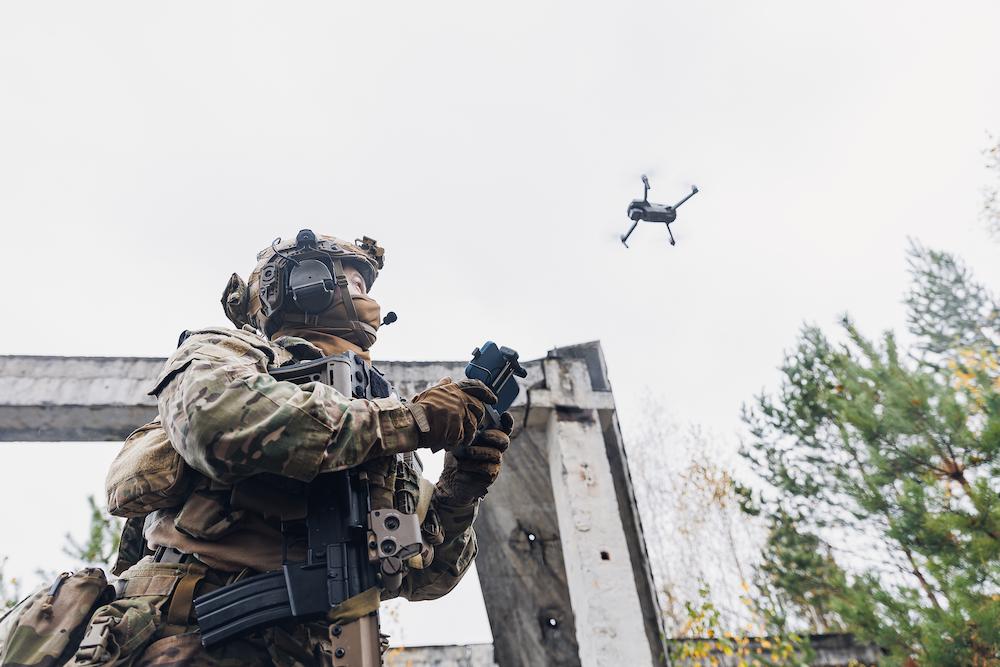By: Tom Adams
People often attribute the popular quote noted in the title to Mark Twain in the late 1800s. Although the exact quote and the incident that inspired it can vary, the quote humorously indicates that something or someone is still alive or thriving, despite rumors to the contrary. It can also be used to refer to something that seems dead or hopeless but still has a chance of success.
This quote always comes to my mind when reading some articles about or listening to someone speak about counter-UAS (C-UAS) — especially when the author or speaker declares that the emergence of “dark” or “silent” drones render radio-frequency (RF)-based detection and defeat technologies irrelevant or obsolete. Let me explain why.
The Dark Drone Myth
For those that aren’t familiar with the term “dark drones,” they refer to UAS that operate without emitting detectable RF signals. This makes them impossible to detect using traditional drone RF detection sensors or to defeat with most RF-based drone mitigation technologies (yes, there is an exception).
The Many Ways of Darkness
There are multiple ways in which a dark drone navigates through the airspace to reach its target destination. One method includes navigating through the airspace using global navigation satellite systems (GNSS) to determine its position and follow pre-set waypoints or flight paths.
Another navigation method called Simultaneous Localization and Mapping (SLAM) involves using sensors onboard the drone to build a real-time map while simultaneously calculating its position relative to that map. This technique allows a drone to navigate intelligently without external guidance, often in GPS-denied areas or during missions where an RF signal would compromise the mission or would be susceptible to RF jamming.
A new technique has emerged in response to electronic warfare (EW) threats on today’s battlefields — fiber-optic cable-controlled drones. These unique drones flying in Ukraine have thin fiber-optic cables that can be used to control a payload-carrying drone for many kilometers without the use of traditional RF-based command and control (C2). This also renders the drones “dark” and has emerged as a pivotal innovation in Ukraine’s defense strategy against the Russian invasion. The connection, tethered from the ground control station (GCS) to the drone, was deployed to counteract Russian military use of RF-based drone detection and defeat technologies.
Here’s how it works. The fiber-optic cable unwinds as the drone flies away from the GCS to its intended target. The fiber-optic cable enables the pilot to control the drone as well as receive high-quality images to enable navigation to the target, right up to the moment of detonation.
Fiber-optic controlled drones are primarily utilized for one-way attack missions. They represent a significant advancement in military tactics. By offering a robust solution to the challenges posed by modern EW, they have set a precedent for future combat strategies.
Yet fiber-optic controlled drones are not without their problems. This drone navigation technique is only appropriate for certain types of missions. The unwinding mechanism and fiber-optic cable adds weight. This reduces the flight time, range, maneuverability and payloads that the drones can carry. The lines can also become tangled, catch on objects or be severed.

Dark But Not Impenetrable
It is true that RF-based drone detection, RF-based jamming and cyber takeover technologies would not detect or defeat SLAM or fiber-optic controlled drones. RF-based drone detection technologies would also not detect an RF-silent drone navigating via GNSS, but the signal from those satellite navigation systems can still be defeated or inhibited using RF-jamming techniques.
While it’s challenging to pinpoint an exact percentage, the vast majority of recreational and commercial drones are still operated via traditional remote control. Most drones are still built with remote piloting as the primary mode of operation, with autonomous features that serve to enhance, not replace, human control. Examples of these features include obstacle avoidance, return-to-home (RTH) functions and autonomous launch and landing.

It is reasonable to assume that the percentage of RF-controlled drones will decrease over time as drone navigation capabilities and technologies evolve. Even so, the traditional method of RF-based C2 will not completely disappear.
Because of this, and many other reasons, it is incorrect to assume that RF-based drone detection and defeat technologies are now obsolete or are irrelevant.
Detection Layers: The Best Strategy
The multiple methods in which drones navigate through airspace remains the key factor in determining your strategy to detect and defeat careless, unauthorized or nefarious drone activity. Because drones fly using both RF-based and non-RF based navigation technologies, end users require a layered approach for both detection and defeat.
The layered approach for detection typically includes the RF-detection layer, radar, cameras and acoustic sensors.
All airspace awareness technologies have strengths and limitations. Radars, acoustic sensors and cameras with object detection algorithms can detect dark drones as well as traditional RF-controlled drones. RF-based detection systems, depending on their functionality can provide valuable data that some drones may broadcast, including pilot location, altitude, drone location, takeoff location, speed and direction of flight.
Combining layers of sensors in a defense-in-depth approach fills gaps in airspace awareness coverage provided by individual sensor types. Additionally, fusing data from radar, RF, EO/IR and other sensors into a common user interface provides the end user with better accuracy as well as faster identification and classification. This enables efficient and accurate threat assessments and facilitates security and law enforcement response, when warranted.
The layered approach for detection will increase the chance for detection of both RF-controlled and dark or silent drones navigating through the airspace.
Full Spectrum Mitigation: The Multi-Effector Approach
For the same reason you want a layered approach for detection, you also want to apply the same concept to defeat or mitigate drones that have been assessed as a credible threat.
A multi-layered effector approach for drone defeat includes kinetic technologies and non-kinetic technologies. This approach is absolutely essential to enable a team to have the ability to mitigate all types of drones navigating through the airspace.
A kinetic mitigation system is one that uses physical force or impact to disable, damage or destroy a drone. This technique includes projectiles such as munitions and nets. It also encompasses other drones designed to ram, capture or disable rogue drones in midair. These types of systems are absolutely essential to protect against dark drone threats.
A non-kinetic mitigation system disables or neutralizes a drone without using physical force or impact. Examples of these include RF jamming, high power microwave, lasers and cyber takeover. As mentioned previously, some non-kinetic RF-jamming systems are capable of jamming GNSS that some RF-silent drones may use to navigate through the airspace.
Future-Proofing the Skies
RF-based drone detection and defeat technologies are not obsolete or irrelevant because most commercial and hobbyist drones still rely heavily on RF communication for control and navigation. These systems remain effective at detecting, tracking and disrupting drones by monitoring or jamming the signals between the drone and its operator. While new threats like dark drones and autonomous systems have emerged and continue to evolve, RF-based solutions still provide broad coverage, real-time awareness and non-destructive mitigation These capabilities make them essential components in layered counter-UAS defenses.
Much like the situation with Mark Twain, the reports of the demise of RF-based drone detection and defeat technologies are quite premature. Both remote-controlled and RF-dark or silent drones will be navigating the airspace for decades to come. Because of this, drone detection and defeat has been, is now currently, and into the future, will require a multi-sensor layered approach.

Tom Adams retired from the FBI after 20 years of service in 2022. The last 14 years of his career he served as a Special Agent Bomb Technician supporting counter-terrorism efforts around the world, and as a Supervisory Special Agent in the FBI’s Counter-UAS program. He has planned and conducted numerous Counter-UAS missions in complex urban environments, including Super Bowls, World Series, and Rose Bowls. Tom served on the FAA UAS Detection and Mitigation Aviation Rulemaking Committee which published its final report in 2024. He earned a master’s degree in Unmanned Systems from Embry-Riddle Aeronautical University. Tom is the Director of Public Safety for DroneShield, a provider of multi-mission Counter-UxS detect and defeat solutions.

